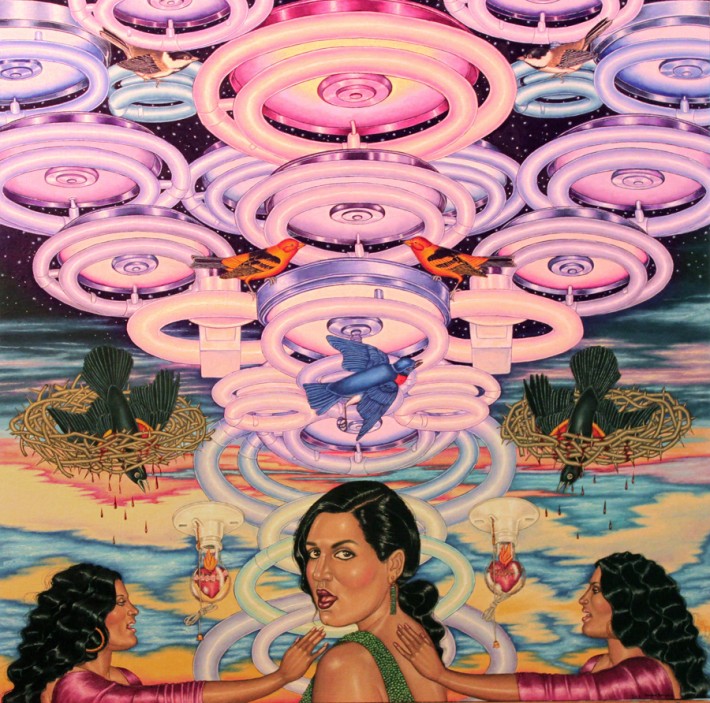More than two dozen artists are included in the CAC’s exhibit
By D. Eric Bookhardt via bestofneworleans.com

‘Double Holy Spirit Coco,’ Douglas Bourgeois
Welcome to the world! There is a National Geographic quality about much of Prospect.3, which offers many windows on the far corners of the planet. The Contemporary Arts Center epitomizes this perspective with works by two dozen artists that often are more meditational than sensational. Even so, the nuances of Douglas Bourgeois’ paintings can be startling as the maestro of Ascension Parish finds no dearth of exotica on his home turf. His Twilight High Yearbook, a painted grid of swarthy, grinning adolescents like a United Nations sampler of ethnicities and hair styles, epitomizes the exotic aura seen in works like Double Holy Spirit Coco (pictured), and throughout this epiphanous selection, which Art News wrote was “worth the trip to New Orleans” in its own right. Sophie T. Lvoff’s photographs of street scenes and interiors initially may evoke social realist views of New Orleans bars, cafes and banged up cars, but look again and they suggest scenes from a funky parallel universe governed by the laws of chance.
Japanese-American artist Glenn Kaino’s tanks of corals in water resemble a strangely beautiful science project, but a wall text says the corals are growing on replicas of the military hardware dumped into the ocean, and those lovely corals are actually locked in a fierce battle over territory. Theaster Gates makes art from ordinary objects like old fire hoses, but his minimalist black-on-black tar paintings resonate a special aura — perhaps because his father was a roofer. Many of the works from the most remote places on the planet defy easy assessment, but some can be surprisingly familiar. Entang Wiharso’s eerie aluminum wall sculptures evoke demonic Hieronymus Bosch figures but actually are about his native Indonesia’s convoluted history of globalization, and Chinese artist Yun-Fei Ji’s dioramic scroll paintings deploy ancient Chinese ghosts to depict human and environmental displacement. Both artists feature figures oddly reminiscent of 19th-century Carnival illustrations, a reminder that east Asia profoundly influenced the (often Carnivalesque) Western art of that period.
